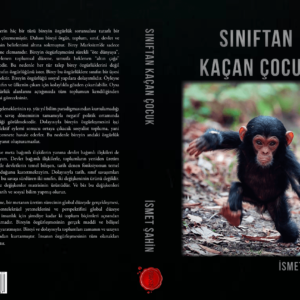
Impact of Terrain and Environmental Conditions on Ultra Running Performance and Injury Risk

Impact of Terrain and Environmental Conditions on Ultra Running Performance and Injury Risk
Abstract
Ultra running, a sport that challenges the boundaries of human endurance, involves navigating diverse terrains and extreme environmental conditions. This paper evaluates how different terrains—such as mountains, forests, and deserts—along with environmental factors like high altitude, extreme heat, and cold, impact the physical performance and injury risk of ultra runners. By analyzing existing research and discussing strategies for mitigating risks, this paper offers insight into how terrain and environmental conditions influence ultra running and provides recommendations for improving runner safety and performance optimization.
Introduction
Ultra marathon races test the limits of physical and mental endurance. However, the performance and injury risk of ultra runners can be heavily influenced by the type of terrain and environmental conditions encountered during the event. Whether traversing steep mountain paths, navigating dense forests, or enduring high-altitude deserts, the runner’s body reacts differently to these challenges. Environmental factors such as high altitude, heat, and cold can exacerbate the physical stress, alter energy metabolism, and increase injury risk.
Terrain Factors and Physical Performance
Different terrains require unique biomechanical adaptations. Steep inclines or rocky paths necessitate greater muscular engagement and stability, while downhill sections can stress joints and increase the risk of overuse injuries. In contrast, flat, smooth trails are generally less taxing on the body, but long periods of monotony can still cause fatigue and mental strain. Research has shown that frequent change in terrain (e.g., from sand to gravel) can activate different muscle groups, which can either enhance or detract from performance depending on the runner’s conditioning.
- Mountainous Terrain
Mountainous terrain is perhaps the most challenging for ultra runners. Steep ascents and descents require high cardiovascular output and strength, particularly from the lower body. This type of terrain increases the risk of knee injuries due to the downhill strain, as well as overuse injuries from repetitive motion. - Desert Terrain
Deserts present both physical and psychological challenges. The constant exposure to hot, dry air leads to dehydration and thermoregulation issues, which can significantly impair performance. Sand dunes and rocky surfaces also require continuous stabilization of the lower extremities, which can increase the likelihood of ankle sprains. - Forest Terrain
While forested trails are typically more forgiving than mountains or deserts, they come with their own risks. Uneven surfaces and dense underbrush require quick reflexes and high ankle stability to avoid tripping and twisting injuries. The humidity and temperature fluctuations within forests can also place stress on the body, affecting hydration levels.
Environmental Conditions and Injury Risk
Apart from terrain, environmental conditions such as temperature, humidity, and altitude dramatically affect ultra runners’ performance and injury risk.
- High Altitude
At higher altitudes, the body is exposed to reduced oxygen levels, which may lead to altitude sickness, fatigue, and decreased aerobic capacity. The body’s ability to recover and maintain optimal performance is diminished due to lower oxygen availability, leading to potential long-term cardiovascular strain and fatigue. - Heat Stress
Extreme heat poses one of the greatest risks to ultra runners. As the body works to dissipate excess heat, sweat production increases, leading to dehydration. Inadequate hydration can lead to heat exhaustion or even heat stroke, which can severely impair performance and recovery. Managing electrolyte balance is crucial in such environments. - Cold Stress
On the opposite end of the spectrum, extremely cold conditions can affect ultra runners by causing hypothermia and frostbite. Cold temperatures increase the risk of muscle stiffness, joint strain, and energy inefficiency, all of which may result in higher injury rates. Proper layering and maintaining warmth during rest periods are essential in cold-weather races.
Risk Management Strategies
Effective strategies to mitigate risk involve both preparation and adaptation to the conditions at hand. Some of the key risk management strategies include:
- Training in Similar Conditions
Adapting to the specific conditions of the race through training in similar environments is crucial. For example, runners can prepare for altitude by training in high-elevation areas, or heat by running in warmer climates or utilizing heat exposure techniques. - Proper Gear and Clothing
Wearing appropriate footwear, clothing, and hydration packs is vital to reduce the risk of injury and improve performance. For instance, trail-specific shoes with high traction are essential for rocky or slippery terrains, while insulated clothing and gloves can prevent cold injuries. - Hydration and Nutrition
Maintaining hydration is critical in all environments. Ultra runners must adjust their fluid and nutrient intake based on temperature and altitude. Special attention should be given to electrolyte replacement, especially in hot conditions, and carbohydrate consumption to maintain energy during long races. - Pacing and Recovery
Ultra runners must manage their pace to avoid early fatigue. Incorporating rest periods and ensuring proper recovery strategies, such as stretching and active recovery, are essential for injury prevention.
Conclusion
Understanding the interplay between terrain and environmental conditions is essential for ultra runners aiming to optimize performance while minimizing the risk of injury. By strategically adapting to the environment, training adequately, and employing risk management techniques, ultra runners can enhance their ability to perform in extreme conditions and reduce the incidence of injuries.
Review
72%
Summary Impact of Terrain and Environmental Conditions on Ultra Running Performance and Injury Risk. Ultra running, a sport that challenges the boundaries of human endurance, involves navigating diverse terrains and extreme environmental conditions. This paper evaluates how different terrains—such as mountains, forests, and deserts—along with environmental factors like high altitude, extreme heat, and cold, impact the physical performance and injury risk of ultra runners. By analyzing existing research and discussing strategies for mitigating risks, this paper offers insight into how terrain and environmental conditions influence ultra running and provides recommendations for improving runner safety and performance optimization.




























RECENT COMMENTS